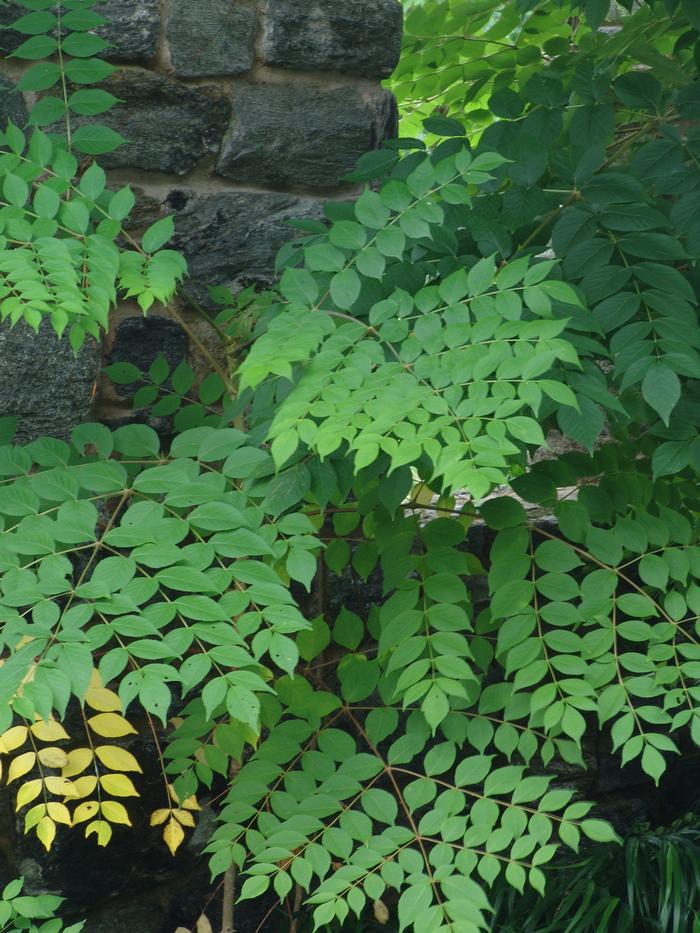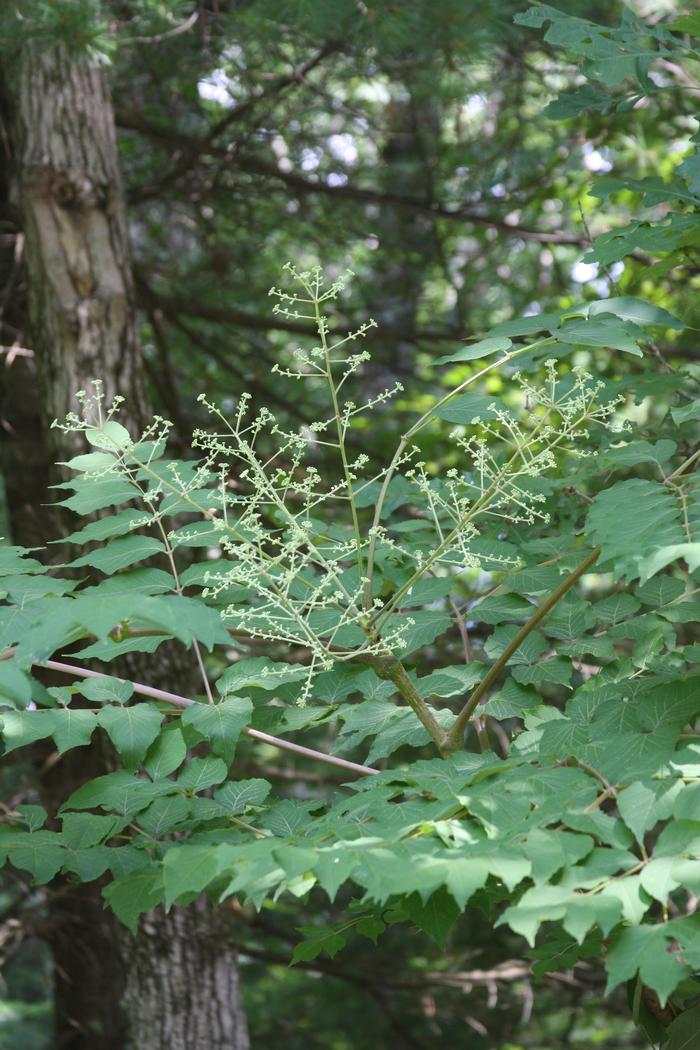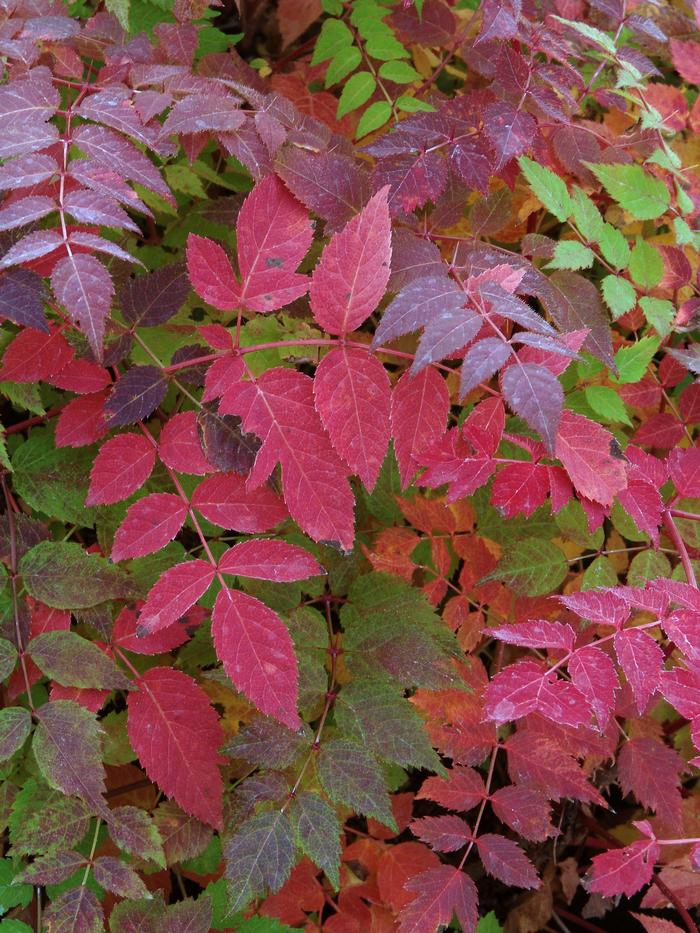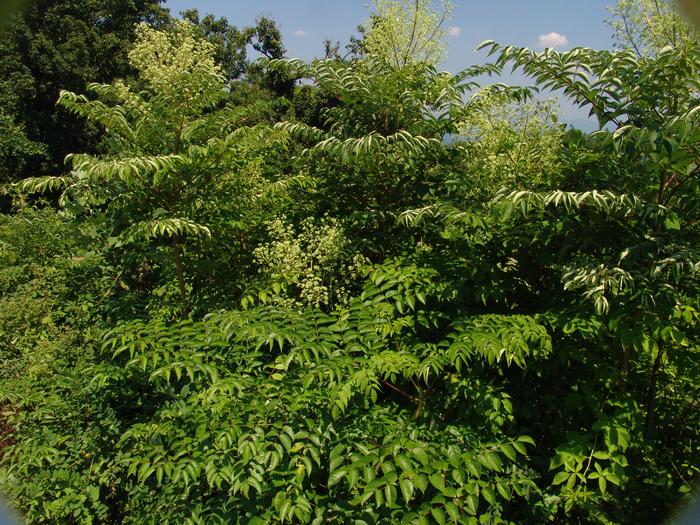General Description
Bloom Description: The large airy flowers appear at the tops of stalks in July-August and attract many bees. The flowers are panicles.
Growth Habit & Shape: Aralia spinosa forms colonies as suckering roots run through the soil. Each stem is thick and covered with spines and very upright like a walking stick.
Soil Preferences: The plant tolerates a wide range of soils. It prefers moist, humusy soils but will grow in rocky and clayey soils as well, and tolerates urban pollution.
Root Description: Aralia has smooth, tan rhizomes that put up ramets (like canes), enabling it to form colonies.
Garden Uses: Good for naturalizing or for deterring dogs and children from penetrating the planted area.
Best Management & Maintenance: This plant takes care of itself when placed in adequately moist, humusy soils. Cut back new ramets at the edge of the colony to prevent its spread.
Common Problems:
Biotic: no serious disease or pest problems. Handling the bark and contact with the thorns can cause allergic reations in humans.
Benefits
Ornamental Value: Devil's walking stick provides a lot of interest in the garden due to its large, pinnate leaves and unusual form. The flowers are attractive to may bee species and the fruits that are formed are important to birds as well. Not a plant for the garden, per se, but an interesting plant for naturalizing in woodlands or to grow in challenging locations. Remove unwanted suckers to keep the coloniy managable. The plant can be mowed to keep it in a designated area as well.
Wildlife Benefits: The berries provide food for birds, flowers are attractive to bees.
Other Practical/Environmental Benefits: erosion control
Use in place of: Japanese barberry, multiflora rose
Ecology
Habitat:
upland and low woods, pocosins, and savannahs, glades, shrub borders, woodland edges, and along stream banks.
Response to Disturbance: In its native range and also throughout New England, devil's walking stick is an early- to mid-successional species, establishing colonizes in glades and forest openings, sometimes to the exclusion of other tree species. It responds poorly to excessively shaded conditions, and is eventually shaded out during normal forest succession. It re-grows extremely vigorously when mown or cut, and is resilient to deer browse and other physical damage.
Native State Distributions:
Canada: ON
USA: AL, AR, CT, DC, DE, FL, GA, IL, IN, KY, LA, MA, MD, ME, MO, MS, NC, NJ, NY, OH, OK, PA, RI, SC, TN, TX, VA, WV
Wetland indicator status: FAC
References
Return to Top




